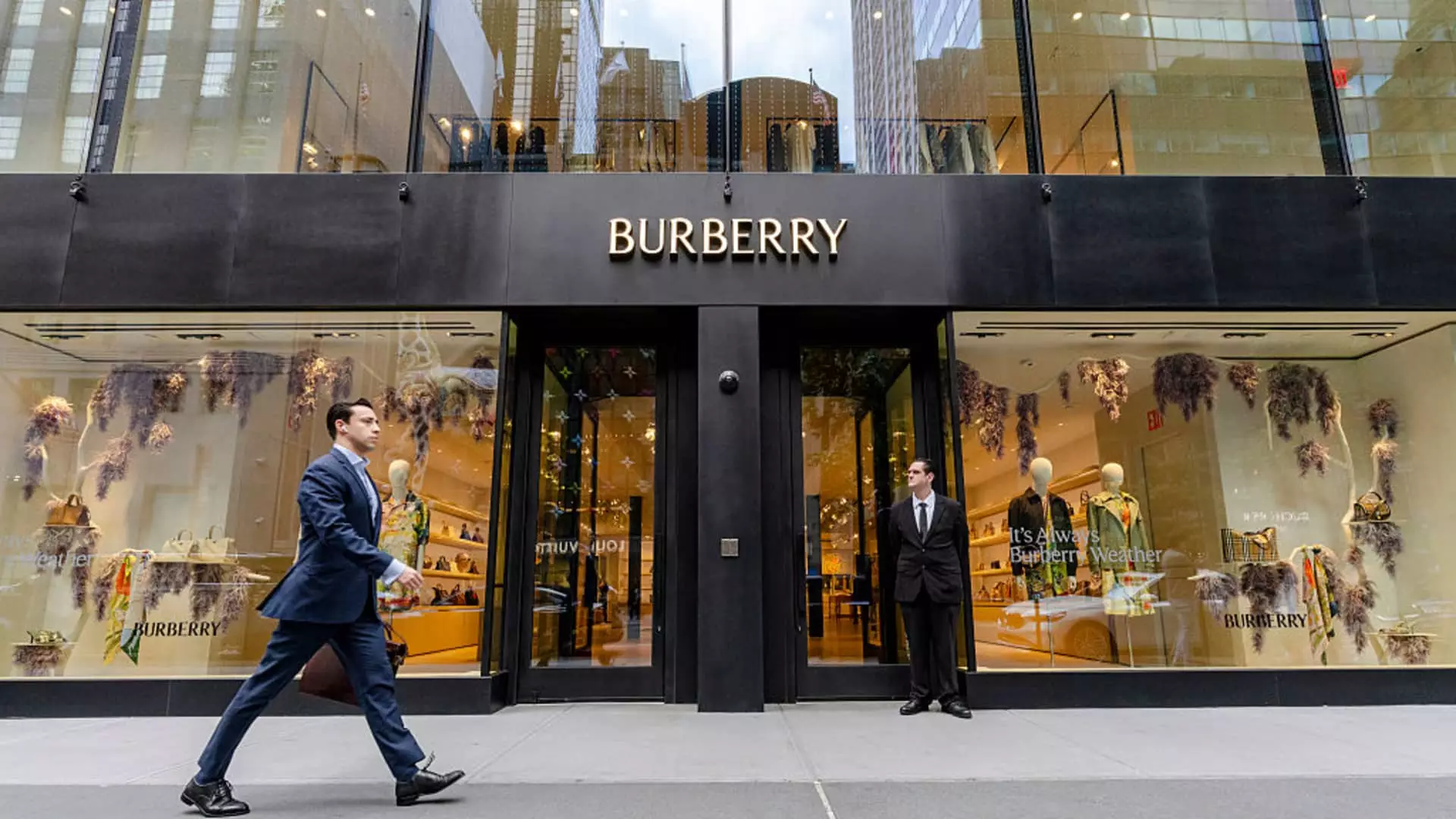Burberry’s recent uptick in American sales seems like a rare beacon of hope amid a tumultuous economic landscape, yet a closer look invites skepticism. While the 4% rise in the Americas appears promising on paper, it mask the underlying fragility that lingers beneath the brand’s facade. The luxury sector, especially heritage brands like Burberry, often thrive on nostalgia and aspirational identity, but these factors are fleeting if not bolstered by genuine innovation and adaptive strategies. The question remains — can Burberry truly sustain this tentative rebound, or is it merely a transient fluctuation that will evaporate once the next economic shock hits?
What’s troubling is the uneven trajectory of the company. The broader group revenues declining by 1%, particularly in key markets like China and Japan, paints a more complex picture. While growth in regions such as Europe and the Middle East offers some reassurance, these are not the markets that will salvage Burberry in the long term. The U.S., with its evolving consumer base, remains a critical yet unpredictable battleground. The 19% contribution of U.S. sales underscores its importance, but also highlights the precarious nature of relying on a market that is increasingly skeptical of luxury brands perceived as out of touch with contemporary values.
Can Heritage Alone Sustain a Modern Luxury Brand?
Burberry’s reliance on its British heritage—symbolized by its iconic check pattern and classic trench coats—is both its greatest strength and its Achilles’ heel. While these elements evoke a storied history, they risk becoming stagnant symbols if the brand does not evolve meaningfully. CEO Joshua Schulman’s comments on diversifying consumer appeal seem to indicate a recognition that heritage is no longer enough. Still, in an era where authenticity and social responsibility influence purchasing decisions, merely emphasizing tradition without embracing modern sensibilities risks alienating younger cohorts who seek brands with a sense of purpose.
Moreover, the company’s efforts to reposition itself as a “luxury brand with broad appeal” appears to grapple with the inherent contradictions of mass-market ambitions within a high-end space. Successful luxury brands derive strength from scarcity and exclusivity—factors that can be compromised when trying to appeal to a wider demographic. The attempt to balance heritage with modern relevance raises doubts about whether Burberry is chasing multiple goals at once without fully committing to any. This could lead to a dilution of its brand identity, risking consumer confusion and diminishing its unique positioning.
Economic and Geopolitical Headwinds: An Unwelcome Reality Check
The looming threat of tariffs and trade disruptions casts a long shadow over Burberry’s prospects. The luxury sector is uniquely vulnerable to geopolitical shifts, which can swiftly undermine sales and profit margins. Executive remarks about adjusting supply chains and pricing strategies are pragmatic but also highlight a critical vulnerability: in times of economic turbulence, luxury consumers tend to retreat, bringing sales down in a way that no strategic recalibration can fully mitigate.
The Chinese market’s stagnation—a consequence of slowed tourism and economic slowdown—further complicates matters. For a brand heavily reliant on international high-net-worth individuals, such disruptions threaten to erode revenue streams and undermine the recent agricultural signs of recovery. The internal cost-cutting measures, including job cuts, suggest that the company recognizes pressure points but also risk stifling innovation and morale within the organization. These austerity measures might stabilize short-term finances but could hinder the brand’s capacity to connect authentically with modern consumers who increasingly value a sense of social consciousness and vibrant storytelling.
Is Burberry’s Revival Just a Temporary Flare?
While analysts cheer on the brand’s “accelerating momentum,” skepticism persists. The recent improvements in organic growth are encouraging, but they remain rooted in a delicate balancing act. Achieving visible change requires more than restructuring and marketing slogans rooted in Britishness; it demands genuine innovation—either through sustainable practices, digital transformation, or social engagement—that resonates truly with today’s socially-aware consumers.
The recent leadership changes and strategic course corrections indicate a recognition that past missteps have hampered growth, yet they also reflect a kind of desperation—an attempt to patch a sinking ship with superficial fixes. Without substantive innovation that aligns with evolving consumer expectations, Burberry risks being a relic of a bygone era rather than a leader in contemporary luxury.
In the end, Burberry’s brief resurgence highlights both the resilience of heritage brands and the peril of complacency. As the market shifts and demands more from luxury than just a pretty logo or a storied history, brands like Burberry must recalibrate their’s strategies fundamentally. Otherwise, what appears to be a promising revival might ultimately prove a fleeting mirage in a landscape rife with uncertainty.

